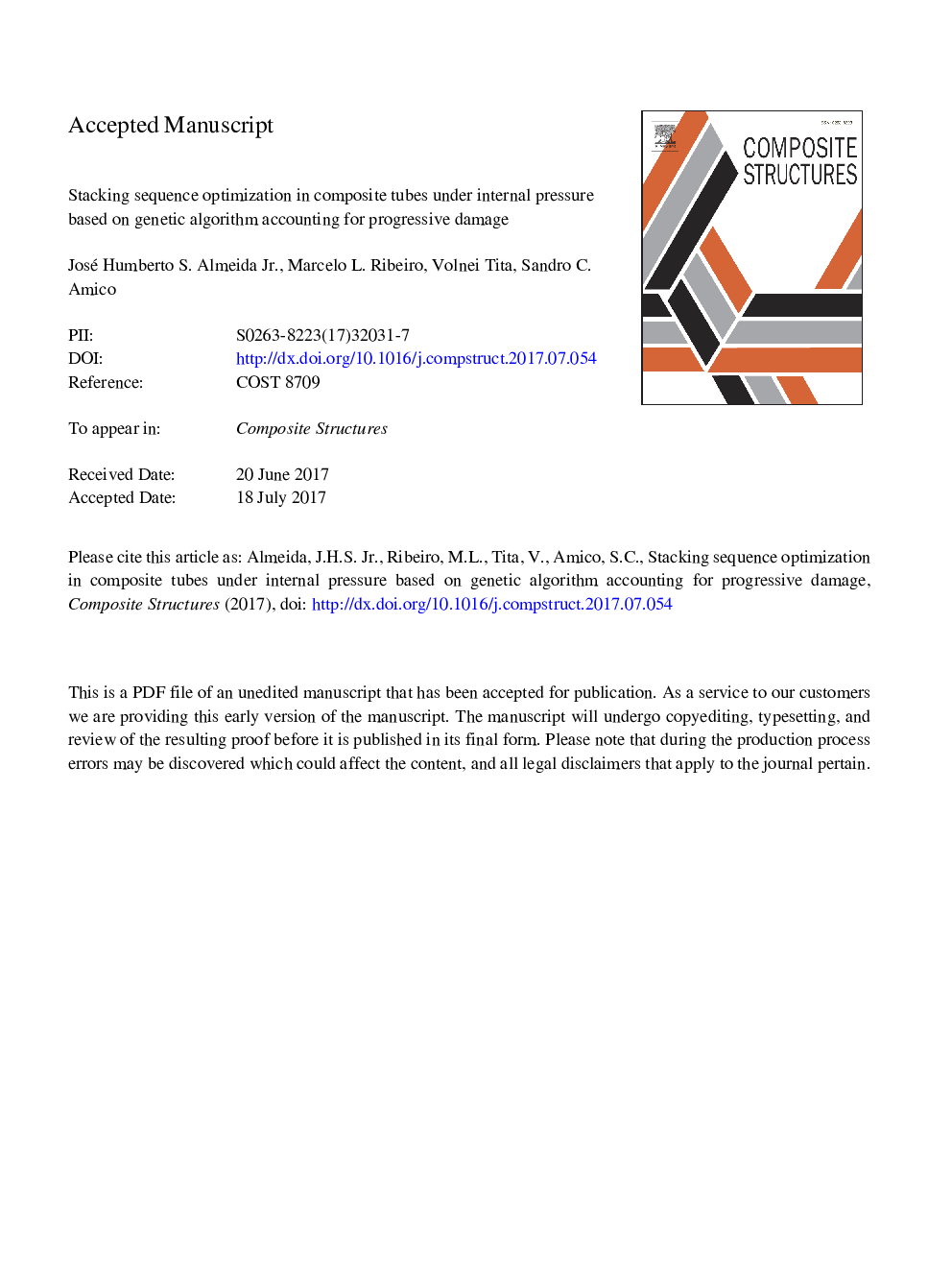| Article ID | Journal | Published Year | Pages | File Type |
|---|---|---|---|---|
| 4911801 | Composite Structures | 2017 | 18 Pages |
Abstract
Due to the large number of design variables for laminate composite structures, the use of an optimum stacking sequence is a key step in the design of a structure with the most suitable mechanical properties. This work presents a genetic algorithm (GA) for the optimization of the stacking sequence to improve strength of a cylindrical shell under internal pressure. The GA is associated to a meso-scale damage model, which was written in Fortran and later linked to a Finite Element (FE) package to simulate composite damage and failure. Two scenarios were considered: i) without restriction, where an ideal situation is simulated; and ii) with manufacturing restrictions, accounting for limitations on feasible winding angles. The results show that progressive failure analysis generates asymmetric and unbalanced laminates in both cases. Furthermore, the simulations with manufacturing restrictions present internal pressure strengths lower than the idealized case, providing more realistic results.
Keywords
Related Topics
Physical Sciences and Engineering
Engineering
Civil and Structural Engineering
Authors
José Humberto S. Jr., Marcelo L. Ribeiro, Volnei Tita, Sandro C. Amico,
